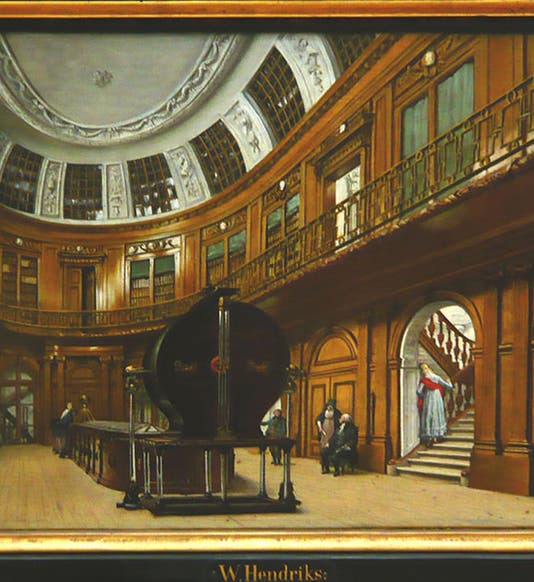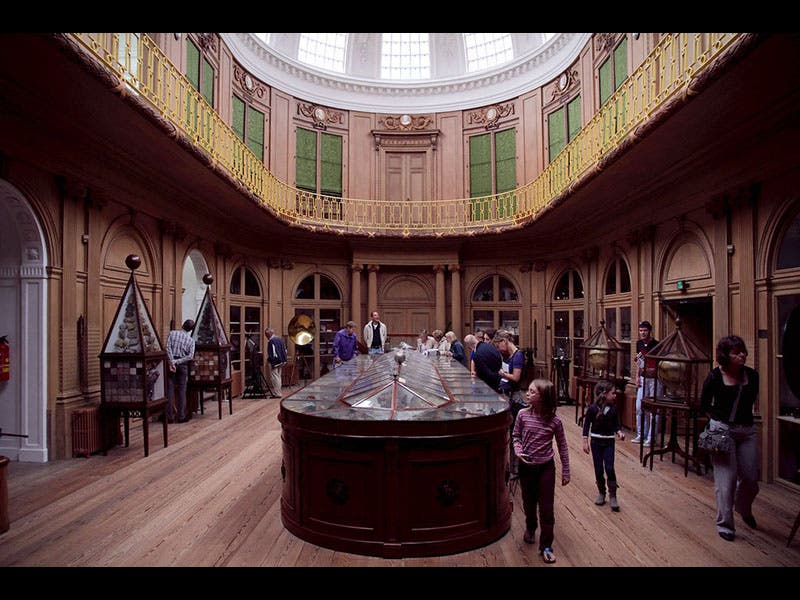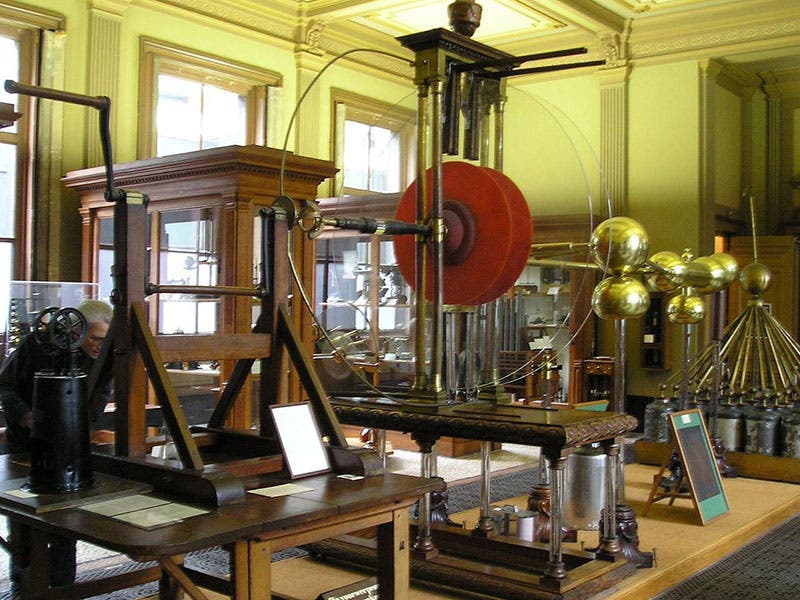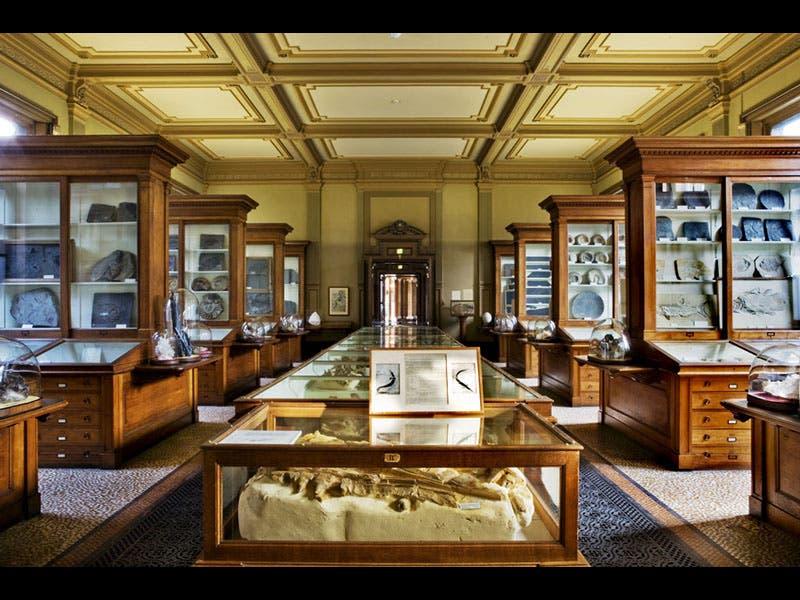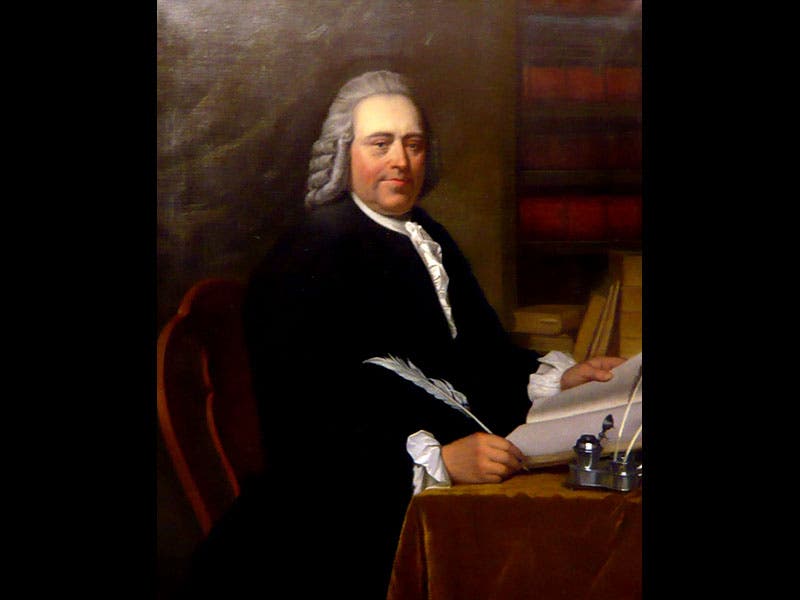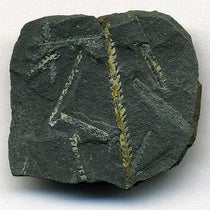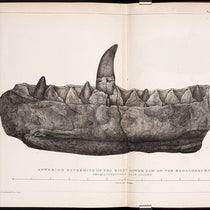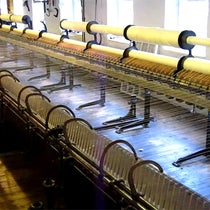Scientist of the Day - Pieter Teyler
Pieter Teyler van der Hulst, a wealthy Dutch merchant, was born Mar. 25, 1702. When Teyler died in 1778, he left the bulk of his estate to his home city of Haarlem, to be used for the pursuit of religion, science, and the arts. The funds were used to found Teyler's Museum in Haarlem, the oldest museum in the Netherlands; the Museum itself occupied the former Teyler house. Behind the house, a building was added in 1784, called the "Oval Rom," with a long display case in the center for minerals and fossils, and an incongruously large electrostatic generator at the end of the case. The electrical machine was built by Martinus van Marum, the first curator of the museum, and he used to give weekly electrical demonstrations, drawing huge sparks from his giant spinning wheel. We see above a view of the Oval Room in 1800 (first image), and then a modern view (second image). One will note that the electrical machine has been moved out, and you will now find it in a different room (third image) along with a variety of other electrical experimental equipment, such as a marvelous set of Leyden jars (fourth image). The Museum houses a splendid fossil room as well (fifth image), which contains, among other treasures, Johann Scheuchzer’s famous giant salamander, which he thought was human, a witness to the great Flood.
The portrait of Teyler, a copy of an original that is not accessible to the public, also hangs in Teylers Museum (sixth image).
Dr. William B. Ashworth, Jr., Consultant for the History of Science, Linda Hall Library and Associate Professor, Department of History, University of Missouri-Kansas City. Comments or corrections are welcome; please direct to ashworthw@umkc.edu.

